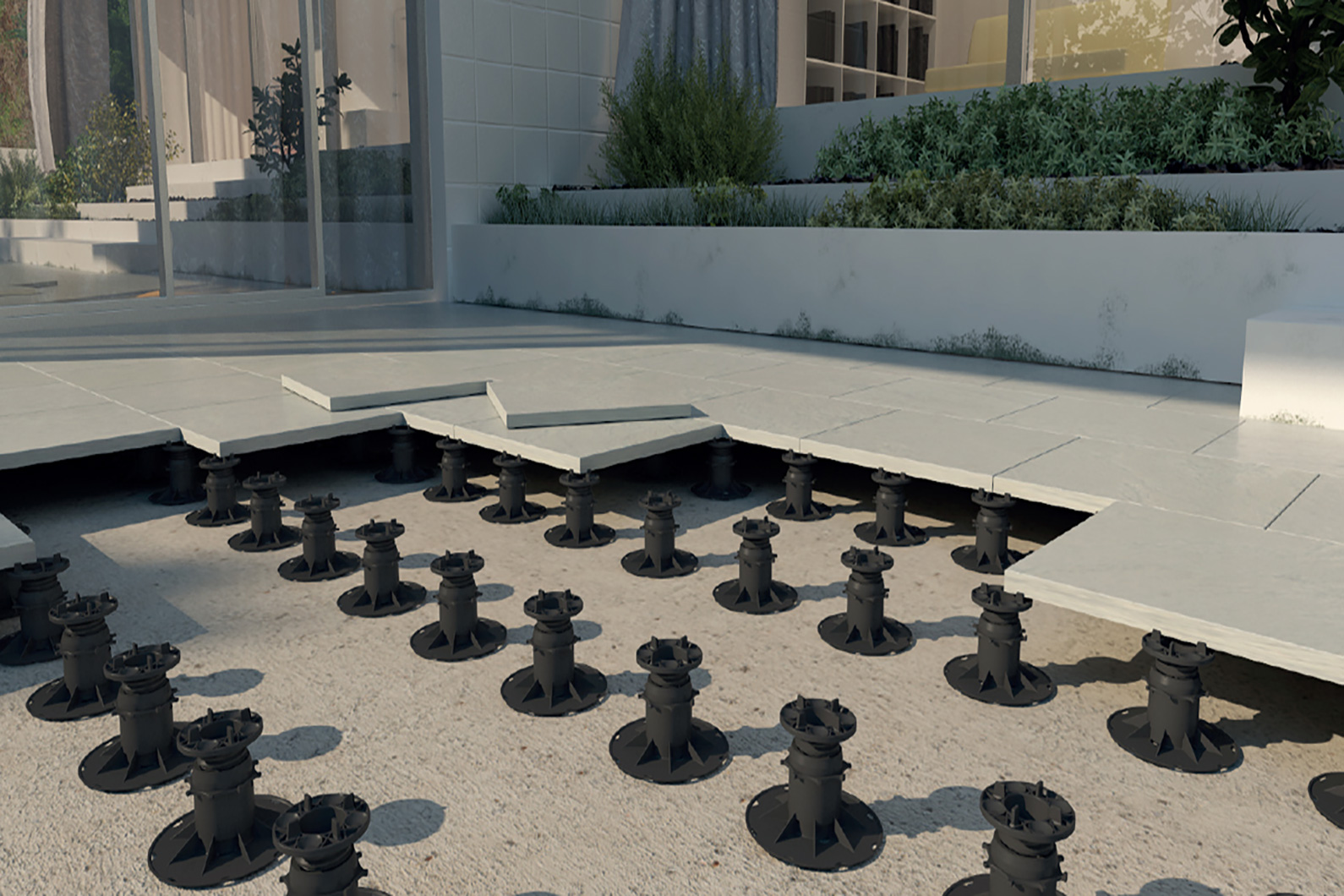3 Things To Consider When Raising an Existing Floor
Considering raising an existing floor? If you’re installing tile flooring or decking that needs to withstand heavy loads, the site has various heights or you have an irregular installation layout, it’s important that you create a raised floor that’s safe, level, organised, efficient, and highly adjustable. So, here are three things to consider to make your floor-raising project a success.
1. Is it hard to raise an existing floor?
Yes. If you don’t know what you’re doing, it can be a strenuous process, with many steps. Luckily, there are systematic tools that make the process a lot easier and these come in the form of a pedestal paver system. So if you want to raise an existing floor, you should consider installing a pedestal system.
2. What are pedestal paver systems?
The most practical way to raise an existing floor and ensure that it’s perfectly level is by using a pedestal paver system. Pedestal supports can help create an even foundation for sloped or uneven surfaces. So whether you’re creating a raised floor for an outdoor deck or integrating raised pavers into an office space, pedestal flooring offers the ideal solution.
Adjustable pedestals are used to level any surface and act as a foundation for many types of pavers or flooring materials like timber, marble, granite, precast concrete, and composite decking and paving. KEKSIA’s raised floor pedestal systems, for example, utilise height-adjustable supports or self-leveling pedestal pavers to compensate for a 0-5% substrate fall or a TW110 slope compensation for a 1% substrate fall to create a perfectly flat floor. There are also various types of pedestal systems to suit different floors, such as the NM Series, SE Series, Star T Series, and SB Series pedestals. The pedestals have an anti-slip and noise-reducing head, and the optional windproof head is useful for high wind areas.
3. Why use pedestal systems?
Using pedestal systems to raise a floor is popular in the building industry since it offers many benefits that you can’t get when using conventional laying methods. In particular, raised flooring solutions are in high demand for numerous commercial and domestic outdoor spaces.
Here are the advantages of using pedestal systems:
- Saves time and money as you don’t need to use grouting, caulking, and bonding. Simply lift the pedestals and pavers into place.
- Expect a clean and neat paved finish as you don’t have to worry about grout smear.
- Get a level finished surface by incorporating drainage levels into the paving sub-base.
- Run cables, pipes, and lighting systems underneath the paving for a clutter-free surface. You can easily access and inspect them by lifting out the relevant pavers and then lift them back into place once you’re done.
- Easily level a surface by placing the pedestals on the underlying surface beneath the decking joists and raise them to the required height. You don’t have to dig, lay cement, or install timber support posts.
- Easy and safe to work with as the pedestals are lighter than traditional floor supports.
- Allows air to circulate freely under the floor and upward through spaced diffuser tiles and ducts. Natural ventilation also improves the durability of timber flooring.
- Prevents fire with flooring that’s non-combustible and offers copper grid grounding and electrical continuity.
- Gives you the flexibility to change the design and layout of the space and manage wires and repairs without ladders or major disruptions due to its lightweight and interchangeable tiles.
- Ensures quick and natural drainage with joints between the tiles. This also improves drainage by preventing localised pooling and damage to the waterproofing of the underlying surface, improving ventilation, and ensuring no mould build-up under the floor.
- Adjustable pedestal supports with heights ranging from 10 to 1020 mm and fixed supports from 3 to 15 mm. You can also adjust the height after installation.
- High loading capacity with each support being able to withstand loads of up to 1000 kg.
- Can be customised to suit your decking type.
- Can be recycled as they’re made from recycled industrial plastic materials.
- Can be used in both cold and hot environments where temperatures range from -40°C to +75°C.
- Comes with specific headpieces for different floors and decks, like stone and ceramic tile flooring and natural and composite timber decking.
- Provides insulation in terms of preventing too much heat loss or gain, reducing noise transmission, and absorbing movements.
Ready to install a pedestal system?
When it comes to raising existing floors, many builders use pedestal systems. The pedestals are stable and even, allowing you to quickly and easily install them no matter what the surface levels are underneath. They support heavy loads and provide efficient heating and cooling. You can also run pipes and cables under the floor and perform maintenance and repairs easily. Moreover, the pedestals are height adjustable and compatible with different flooring options for design flexibility.
KEKSIA is dedicated to sourcing unique products from forward-thinking companies that facilitate the transition to higher standards. Our pedestal systems make raising an existing floor a smooth and reliable process. Click here to explore our range now. Alternatively, give us a call on 1300 633 099 or send us a message to learn more about our pedestal products.


